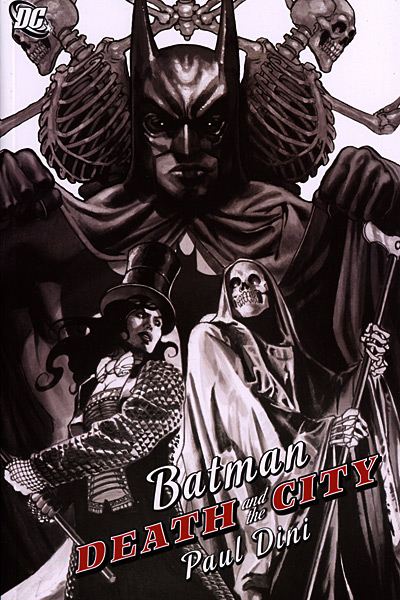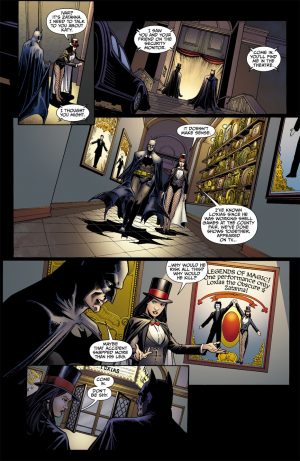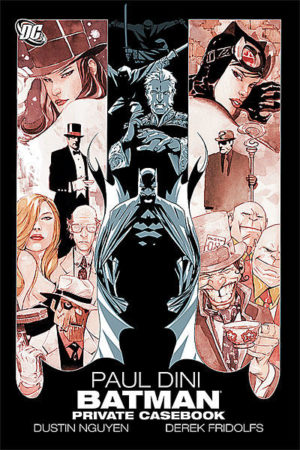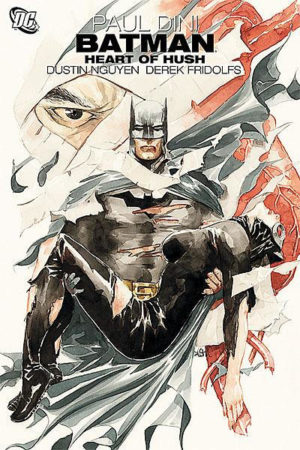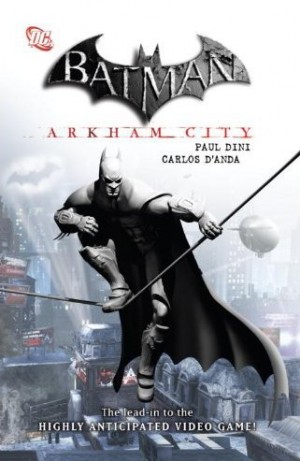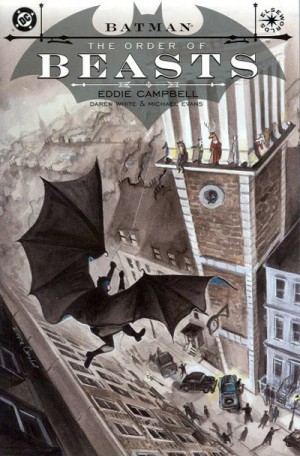Review by Karl Verhoven
Although Paul Dini is the cover-featured creator, he’s not responsible for the entire content, as Stuart Moore contributes the two-part ‘Siege’. It’s set during an anti-terrorism conference hosted by Bruce Wayne, and introduces a new villain and his liquid explosive. Much of the tension derives from Robin being coated with this substance, but as only his costume is sprayed, it might send hearts a flutter, but surely the solution was to remove it rather than run around desperately hoping he’d not be detonated.
Andy Clarke illustrates this tale. He’s a more meticulous artist than Don Kramer, who’s responsible for most of the remainder, but that comes at the cost of figures that are static and posed. Clarke also draws Royal McGraw’s return of three crooks last seen in the 1960s, each wearing animal-headed masks. Someone is targeting them, with their methods of execution matching their motifs. It features a clever twist.
As was the case in Detective, most of Dini’s contributions are single chapters that prioritise the detective aspects of Batman’s personality. Indeed, the preceding volume was titled Detective. Dini draws on some elements introduced during that for his finale, which returns magician Ivar Loxias, thrilled by his previous encounter with Gotham’s villains: “the perfect fusion of the performer and the sociopath.” Mistakes have been occurring during his performances, eventually resulting in loss of life, and Batman enlists the aid of more learned magician Zatanna. This isn’t as simple as might be, since events elsewhere have strained their relationship, but Dini implanting a previously unknown childhood relationship serves to shine a light on both characters.
The best of Dini’s shorter material features Harley Quinn, the character he created for the Batman animated series of the 1990s, with her parole hearing taking a surprising turn. He also supplies a mysterious murder at sea, and returns several popular characters, including the reformed Riddler, himself no slouch on the detection front, and Scarface, with his previous operator Arnold Wesker well characterised in flashback.
Kramer is a solid storyteller whose layouts are dynamic, yet provide a smooth read. A smooth read is indeed what’s provided for most of Death and the City. It doesn’t rank among the finest Batman graphic novels, but it’s solid material that should appeal to most Batman fans. The next collection of Dini’s work is Private Casebook.
